|
Many urban homes in Saint Paul, Minnesota, were built on hills above the street. The lots often
slope down steeply to a sidewalk, and the majority of these slopes are planted with lawn. I've
seen people pulling their lawnmowers uphill with ropes to cut the grass. I've also seen people
standing under their running lawnmowers to push them uphill.
But things are changing, and
recently gardeners who are both adventurous (with plants) and cautious (with lawnmowers) are
replanting their slopes with a variety of gardens.
Here are a few samples of slope gardens in my neighborhood, with my best guesses about
the identities of the plants:
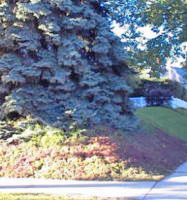 Creeping sedum clothes this steep slope on a corner lot under a mature evergreen. |
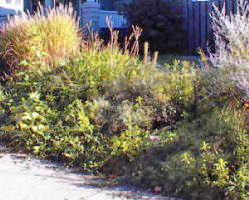 This prairie-style slope garden, colorful even in October, includes ornamental grasses, daylilies, and Russian sage. |

A limestone block wall supports creeping vines and white snakeroot in dappled shade. |
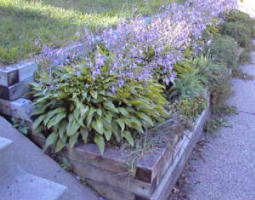
Landscape timbers neatly retain a short slope with hosta and creeping groundcovers. |
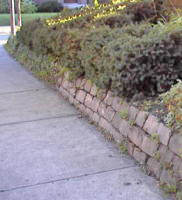 Oversized bricks support a row of yews and boston ivy on a shady slope. |
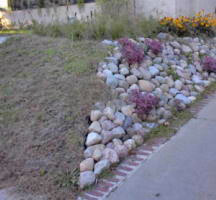 This corner is divided, half planted with crown vetch and the other half covered in large rocks interspersed with asters and brown-eyed susans. |
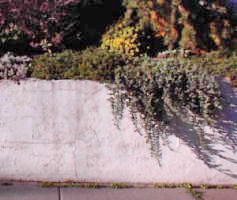 This sunny cement wall is topped with creeping evergreens. |
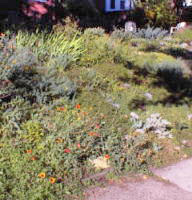 Rocks and driftwood are scattered among dozens of perennials and annuals; the bottom is held by a line of landscape timbers. |
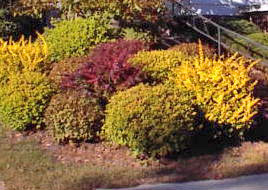 Clipped shrubs cover this slope in a formal thicket. |
A slope can be an asset to your property. Shaded or sunny, it offers you the chance to make a bold artistic and architectural statement. I hope this sample of the many possibilities will inspire you to create your own unique slope garden.
|